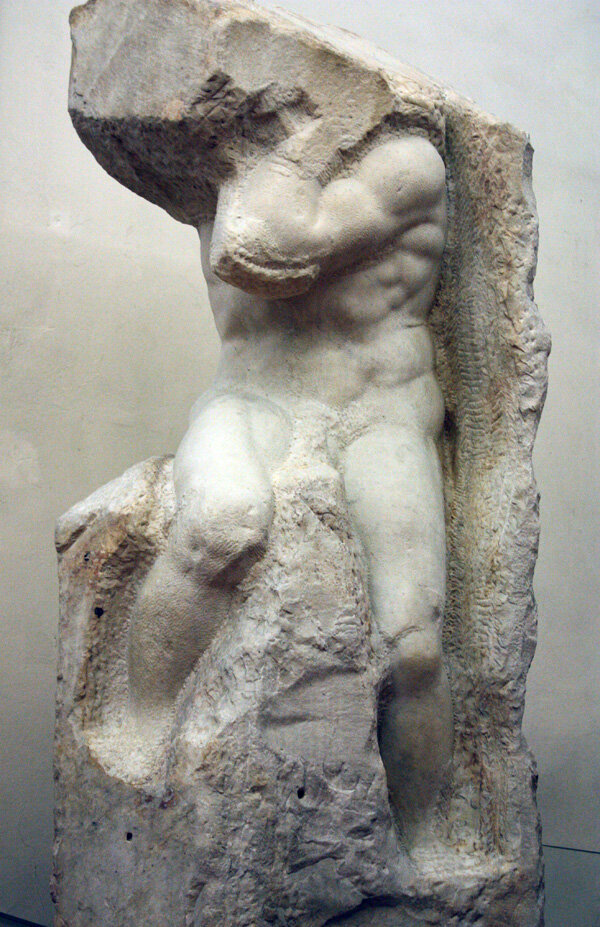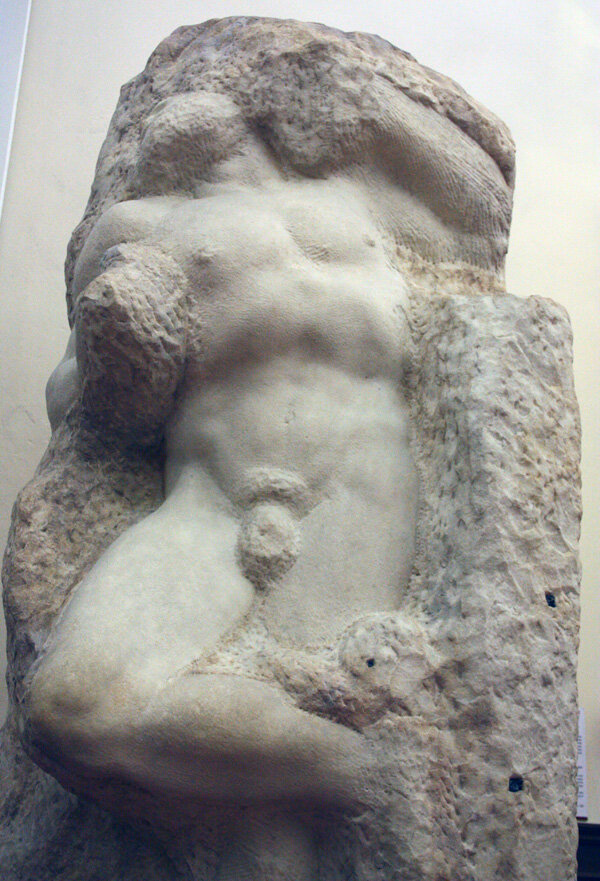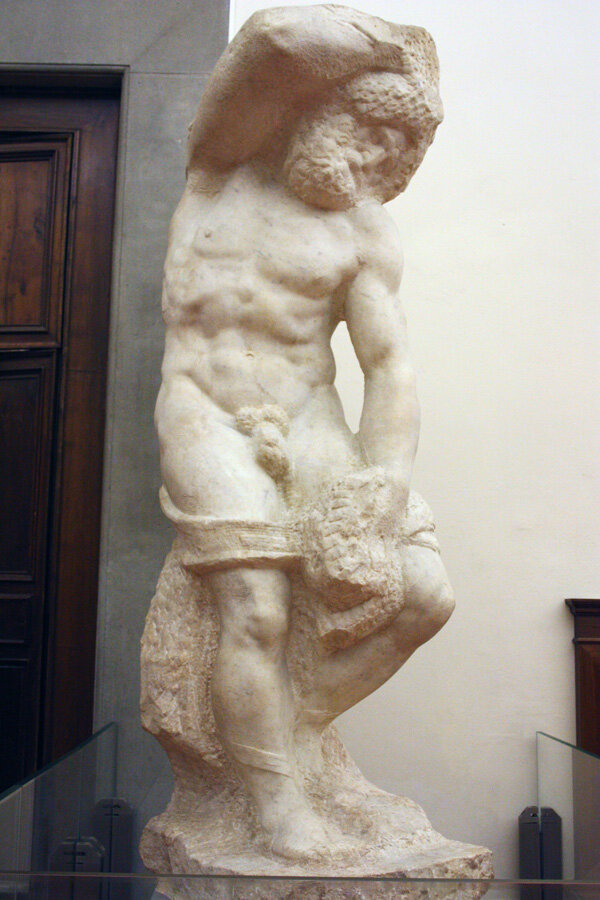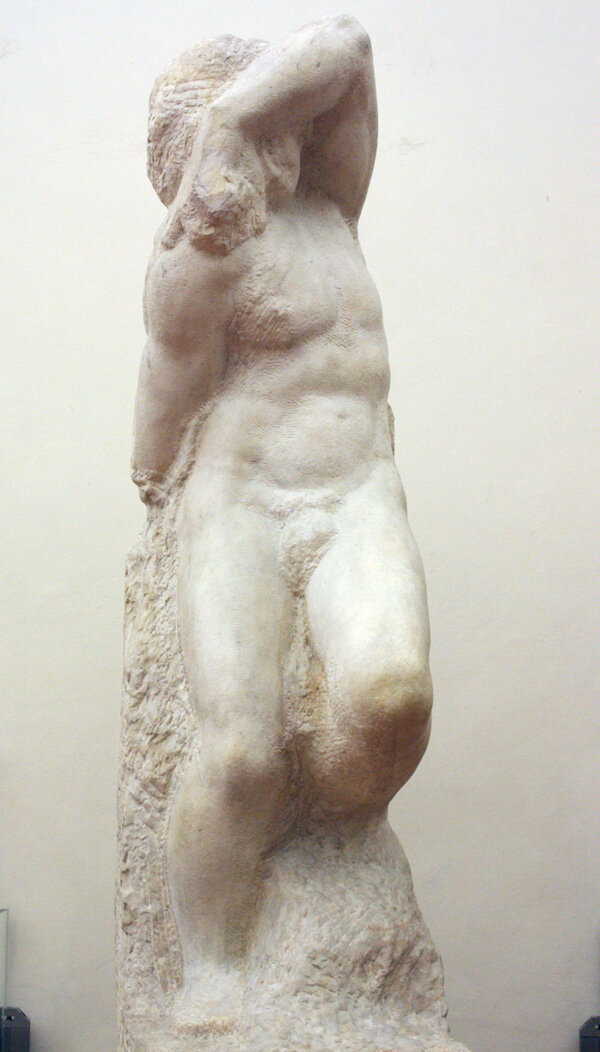Since my debut novel, Oil and Marble: a novel of Leonardo and Michelangelo, is art historical fiction set in Florence, a lot of people have asked me what they should see when traveling to this Renaissance hot spot.
Florence is certainly an artistic wonderland, and you could spend weeks in the city and still not see it all…
So, here’s a list to help guide you.
(Oh and, sorry Michelangelo, although I most certainly could’ve listed more than one work for YOU in Florence, I made a conscious decision to not double dip on ANY artist. Everyone is stuck with just one masterpiece).
Birth of Venus by Botticelli at the Uffizi
This iconic “Venus in a half shell” painting is one of the jewels of Florence. The God of Wind blows Venus into birth on her shell while the Goddess of Seasons prepares to drape her in a robe of flowers… I’m also beginning this list by breaking my rule of not “doubling up” on any artist because in the same room as Venus is also Botticelli’s La Primavera, another must-see Renaissance masterpiece.
Botticelli’s La Primavera
Leonardo da Vinci’s Adoration of the Magi also at Uffizi
While you’re in the Uffizi DO NOT MISS this unfinished masterpiece, a tribute to Leonardo’s curious mind — it includes a range of figures, landscapes, and architectural elements. A year after this altarpiece was commissioned, Leonardo fled Florence for Milan and did not return for another 20 years. Why did he flee? We don’t really know. The master had been accused of sodomy a few years before (the charges were dropped) and his relationship with his father was deteriorating (if not non-existent)… but perhaps Leonardo left Florence because he was, well, Leonardo. It was time to see, do, and learn something new. This unfinished design stands as a tribute to his early development in Florence. In Milan, he would grow into a master…
Venus of Urbino by Titian at the Uffizi
Alright, just stay in the Uffizi for a while. And while you’re there, make sure and track down Titian’s masterpiece of domestic eroticism, depicting the goddess of Venus draped across a couch, staring directly out at the viewer. This work also inspired another masterpiece 300 years later: Edouard Manet’s Olympia was the painting that kicked off the Impressionist movement.
Manet’s Olympia at Musee D’Orsay in Paris
Judith and Holofernes by Artemisia Gentilleschi also at the Uffizi
While you’re still at the Uffizi, find this female version of the iconic story of Judith decapitating Holofernes. At a time when female painters were a rare curiosity, Artemsia transcended her “proper place” to become the first woman to be accepted into Florence’s Accademia di Arti del Designo. The painting is dark and violent, perhaps harkening back to the painter’s history as a rape survivor; she was a rare woman who filed a law suit against her attacker, although she was the one chased out of town in scandal. Artemisa had the final word though: her art lives on through the ages.
Donatello’s Judith and Holofernes in the Palazzo Vecchio
When you leave the Uffizi, track down this alternate version of the same Judith and Holofernes story, this time by Donatello, showing Judith — symbol of liberty and freedom — beheading the enemy general Holofernes to save her people. It was originally commissioned in in the 1450s by Cosimo de’Medici, but when the Medici family was expelled from Florence in the 1490s, the citizens re-appropriated Judith for their own purposes. For over a decade, this statue stood in the Piazza Vecchio as a symbol of Florentine’s liberation from Medici rule. And there it might have remained, except another sculpture eventually replaced it: A little marble statue by the name of David….
Benvenuto Cellini’s Perseus in the Loggia dei Lanzi
When this statue was erected in the Piazza Vecchio, Donatello’s Judith and Holofernes and Michelangelo’s David already stood in that same square. Cellini had a lot to live up to — and he did not disappoint. The most famous goldsmith and sculptor of his day, Cellini struggled to cast this bronze, but it was immediately hailed as a masterpiece. In the tradition of triumphant symbols of Florence, this statue depicts the mythological hero of Perseus holding up the severed head of Madusa.
David by Verrocchio in the Bargello
This bronze masterpiece (David, moments after slaying Goliath) was sculpted by Leonardo da Vinci’s teacher, Andrea del Vercocchio in the 1470s, when Leonardo was still working in the master’s studio. In fact, rumor has it, the face of this handsome young David is the face of Leonardo himself — when he was around 2o years old.
Madonna della Seggiola by Raphael in the Pitti Palace
A holy man was once chased up an oak tree by wolves, but a fearless young woman chased away the hungry pack. To thank her for rescuing him, the holy man promised that both lady and tree would become famous. Years later, when the young woman was a mother of two, a painter became entranced with her and decided to paint her. As his canvas, he used the base of one of her father’s round oak barrels (made from the holy man’s blessed tree). The artist was Raphael. The painting is this Madonna and Child. The holy man’s blessing came true: the lady and her tree will be eternally remembered through this Renaissance masterpiece.
East Doors of the Baptistery of St. John by Ghiberti
In 1401, Lorenzo Ghiberti and Filippo Brunelleschi faced off in a fierce competition to decide which of those two great artists would win the commission to cast the doors of the Baptistery. Ghiberti won; it took his shop 27 years to complete the all the doors, but the struggle was worth it. Michelangelo thought these doors were so beautiful they were fit to stand as the “Gates of Paradise.” But don’t feel too badly for the loser Brunelleschi. 15 years later, he returned to Florence and once again faced off against Ghiberti — but this time, he won, earning the right to build Florence’s famed Il Duomo.
Michelangelo’s David in the Accademia
Michelangelo carved this free-standing, colossal nude statue out of a single block of marble in less than three years. Over 17 feet tall, it depicts David glaring at his enemy Goliath just before battle. Once guarding city hall (and now protected from the elements inside the Accademia), the statue has stood as a symbol of the power and faith of Florentines for over 500 years. Lining the walls of the gallery leading up to the David are the sculptor’s unfinished slaves — by taking a moment to contemplate these unfinished works, you will get a sense of the struggle the sculptor faced to dig David out of his block of marble and bring him to life.
Yes, yes, yes, I know, I know, I’ve cheated and included more than one Michelangelo. But honestly, what did you expect???
This list doesn’t even begin to scratch the surface of all the great art in Florence. Please let me know YOUR favorites in the comments below or on social! Happy Florence-ing.
















